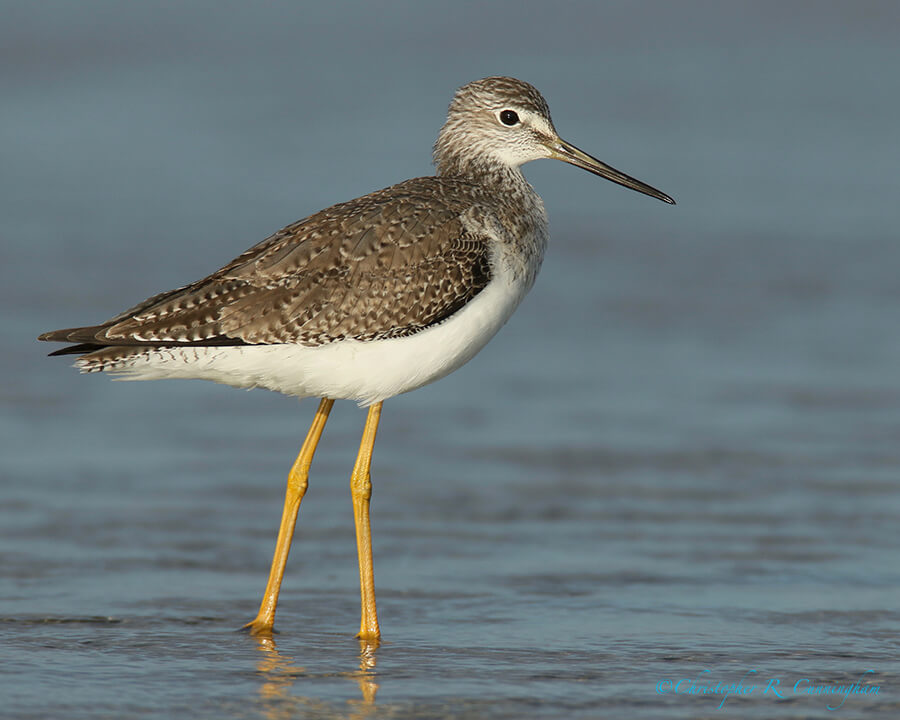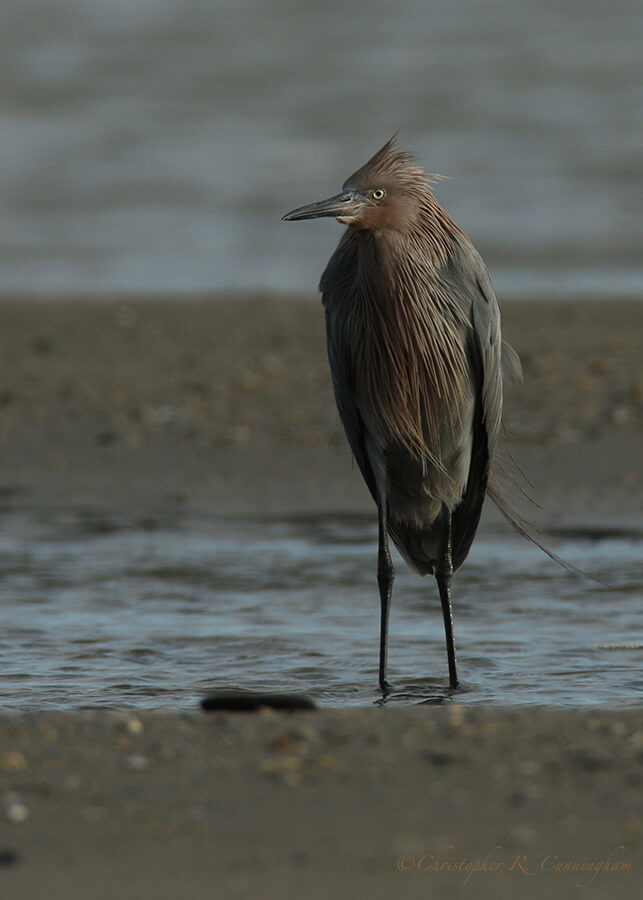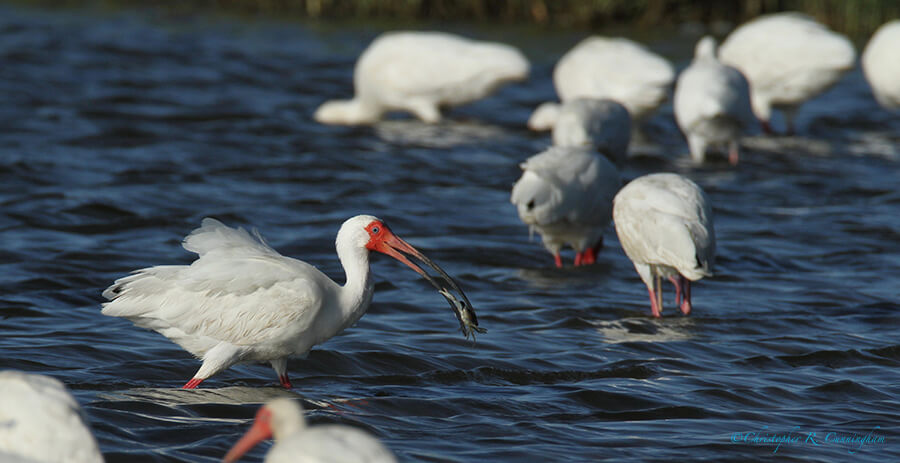Life is a little like a message in a bottle, to be carried by the winds and the tides.–Gene Tierney

In January, while walking down the beach on the East End of Galveston Island, Texas I noticed a new tidal channel that blocked my progress south. I was annoyed because I was wearing hiking shoes and not boots as I should have been. But I noticed that the outflow (it was low tide) was attracting Lesser and Greater Yellowlegs that were picking small fish and invertebrates from the gently flowing water. I didn’t think much of where the water was coming from and pressed on south along the beach (with wet feet).

In early April, we again visited the area and found that the tidal channel had grown greatly and now penetrated a lagoon that is typically a pretty good spot to bird, although the light can be challenging. I am referring to the lagoon just south of the parking area and east (seaward side) of Bodekker Road, kitty-corner from the East End Lagoon Preserve.
With the penetration of the new tidal channel, however, the lagoon now drains at low tide. Parallel to the long axis of the lagoon, on the landward side, runs a riprap and concrete levee that crabbers frequent. As the lagoon drains, water seeps through the levee from slightly higher elevation creating little trickles and streams. This change has created a birding wonderland for one simple reason: It has produced a diversity of microenvironments within a small area. Red-breasted Mergansers now fish in the deeper parts. Avocets, yellowlegs, White Ibises, Willets, and dowitchers hunt and fish in the slightly shallower areas. Sandpipers scamper across emergent rippled surfaces. Tiny differences in water depth and flow really seem to make a difference to foraging shorebirds.
We planned to explore this spot again the following week, but when we arrived we noticed that yahoos had taken over so we pressed on to Lafitte’s Cove. It was clear, however, that the tidal channel had expanded, and even though it was nearly high tide, the area was very birdy. We drew up plans to visit again at low tide. We hoped to visit again on the morning of April 17, to check channel status but a storm tide was inundating the coast. The next day, of course, a series of catastrophic storms hit the Gulf Coast in general and the Houston area in particular. I hope this recent bout of stormy weather doesn’t remodel the East End area too much. At the end of April, low tides will fall in the evening, and we plan on visiting this area again for some golden hour photography.

A simple walk on the beach reveals a great truth: A diversity of habitat means a diversity of wildlife. As humans continue to pulverize and homogenize the planet, life around us disappears—half of all songbirds and many shorebirds in my lifetime, for example. One little patch of tidal zone on the end of a barrier island in the Gulf of Mexico illustrates this principle perfectly.
@2016 Christopher R. Cunningham. All rights reserved. No text or images may be duplicated or distributed without permission.